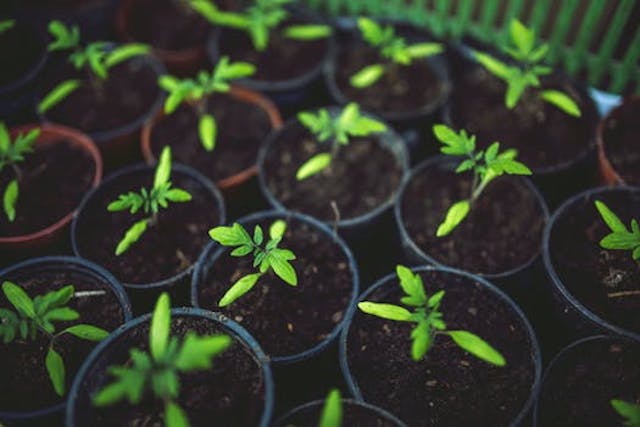Posted: Mar 18, 2018

With online grocery sales surging and delivery services like Postmates and Instacart growing, it’s clear that e-commerce has drastically changed the food and beverage space. Customers now expect the same convenience from supermarkets that they do from other retailers.
But there’s one vertical that has been slow to catch up to these standards: wine and spirits. For a number of reasons, the industry is lagging behind rising consumer expectations — and it’s a lose-lose for both shoppers and brands alike. Consumers want food and beverage providers that can anticipate their needs and personalize experiences, but they aren’t getting that from the companies out there today.
To make real strides, leaders must understand the challenges that have impeded a flourishing e-commerce marketplace for wine and spirits providers, where the market stands now and how to get ahead of the curve.
The challenges of alcohol and e-commerce
It’s easy to see why wine and spirits brands have adapted less quickly to e-commerce than those in other verticals. Alcohol regulations, many of which remain largely unchanged since Prohibition, have restricted the easy transportation of wine and spirits to consumers. For example, only five states today permit direct shipping of spirits to consumers. Additionally, each state regulates alcohol differently, adding further logistics challenges.
These regulatory challenges compound the struggles e-commerce companies already deal with when managing transactions and fulfillment online. The logistics of shipping high-value liquid products across the country, temperature control requirements, and the need for specialized couriers can create difficult barriers.
Additionally, the last mile is especially problematic for wine and spirit delivery considering the need for ID verification (and the fact that you can’t leave wine outside on a doorstep in extreme weather). Today’s solutions aren’t great — for many brands delivering these products, home delivery fails almost half of the time. Though brands have more success delivering to business addresses, last-mile concerns are significant.
So, where are we now?
The challenges of marrying alcohol with e-commerce haven’t stopped all companies from playing the game. But most brands that have ventured into this territory are limited in what they currently offer.
One-hour delivery players have emerged, like Mini Bar and Drizly, with convenience as their main selling point. These services get spirits to consumers quickly and easily. However, such companies offer little value when it comes to brand and relationship building. Brands delivered by them aren’t learning anything about their consumers since they aren’t able to collect the data.
The digital wine space is currently populated by weak players from software services, like VinSuite to Wine Direct, that specialize more in club fulfillment, often with outdated and inefficient platforms. These companies use almost zero behavior-based marketing tactics and struggle to maintain customer loyalty.
To succeed, brands need to take cues from the companies already mastering e-commerce. The same trends that have defined the past few years of e-commerce should be implemented here: seamlessly connected online channels, personalized and hyperlocal CX strategies and data-backed behavioral marketing tactics. The entire category presents an enormous opportunity for brands that can master these strategies.
Take companies like Vivino, an online wine community, database and mobile app where users can buy, rate and review wines, scan wine labels to learn more information about their favorite bottles and receive personalized recommendations based on past purchase history.
Companies like this offer the engaging experiences other brands must emulate to form real connections with customers, who need better reasons not to just buy from the liquor store on the corner of the street. That means providing more value than just a delivery service or a discount on wine.
The final piece of the alcohol and e-commerce puzzle brings together digital engagement and human nurturing. Because alcohol is a more unique product than other industries, the relationship cannot succeed if companies keep consumers at arm’s length. Services need to focus on personalizing the digital experience by automating the early steps through one-to-one behavioral marketing and then engaging through white-glove service that is more human. This combination is the only way to win in the alcohol e-commerce space. For anyone who can build brand-centric relationships and deliver on a unique and ownable brand promise, the future looks bright.
Mastering alcohol and e-commerce is easier said than done. To deliver these experiences, brands require robust e-commerce platforms that can not only handle the challenges that come with traditional e-commerce but that are uniquely adapted to the hurdles of selling wine and spirits. Supported by this backend technology, wine and spirits brands might finally catch up to 2018 and deliver the experiences their customers crave.
By Sean Dunn
March 13, 2018
Source: Fooddive.com
Go-Wine's mission is to organize food and beverage information and make it universally accessible and beneficial. These are the benefits of sharing your article in Go-Wine.com


The Wine Thief Bistro & Specialty Wines is a locally owned small business in downtown Frankfort, IL offering world class wines in a relaxed, casual gathering spot for friends and family. Offering world class virtual tastings and touchless carryout.
https://www.twtwineclub.com/aboutus
Go-Wine 25 Great Wineries in US selection prioritizes quality, value and availability.
www.go-wine.com/great-wineries-in-america
Tasting wine is a nice experience, but visiting the places in which wine is made is a magic moment. Available in New York City for touchless pickup.